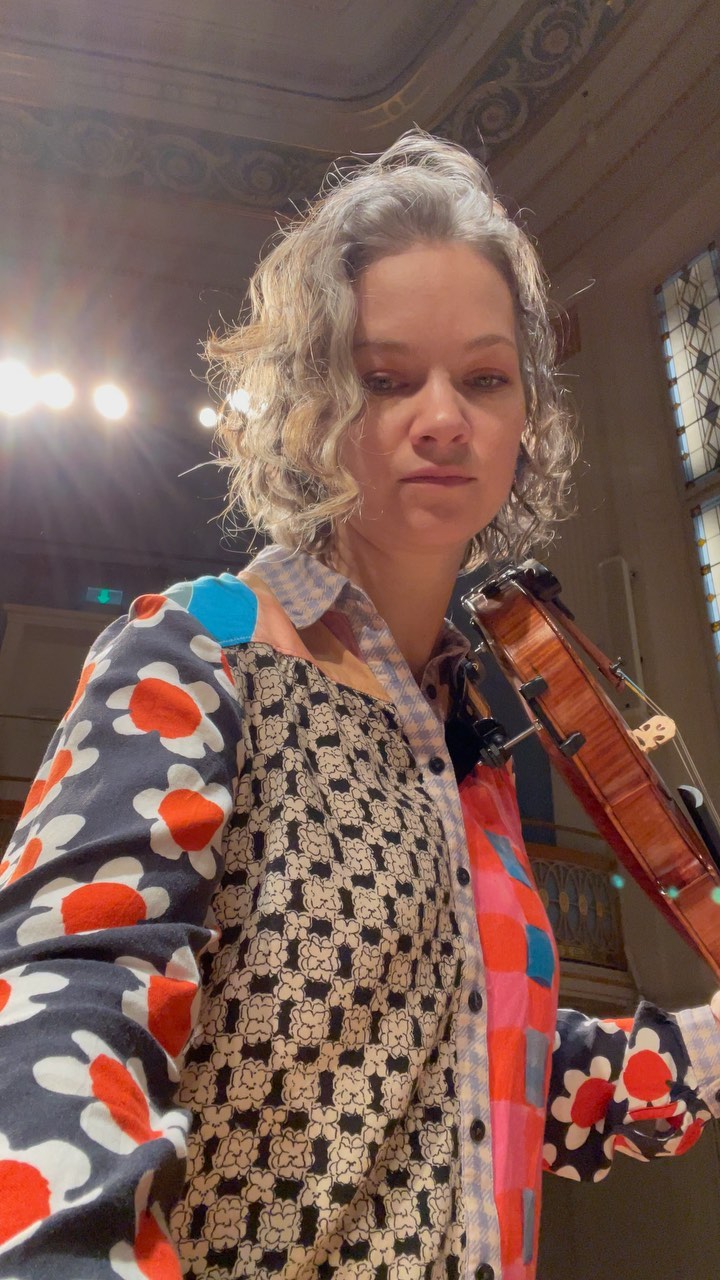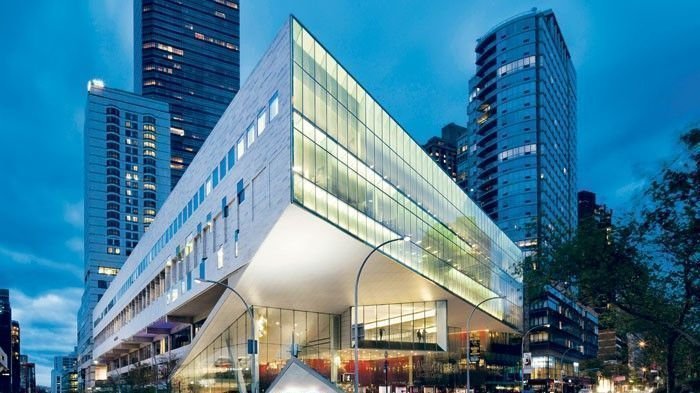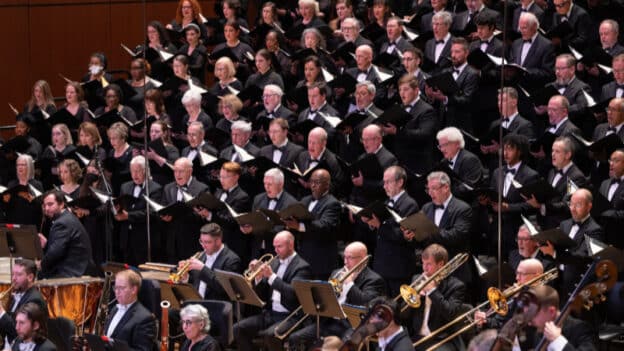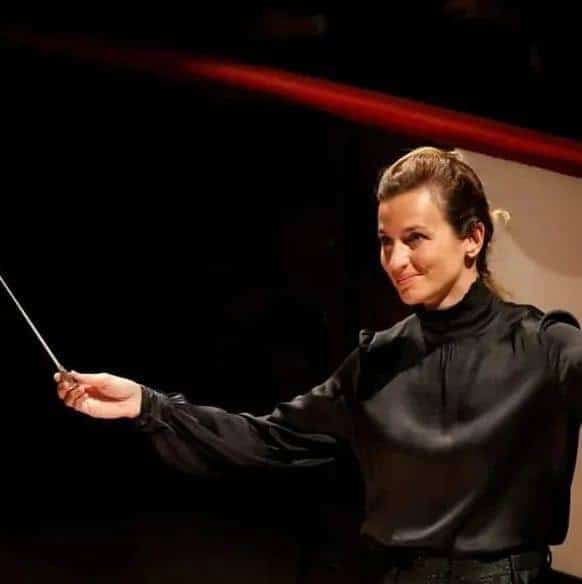Label blues: Harpsi-star quits DG
mainAfter three years of exclusivity on the yellow label, Mahan Esfahani is returning to boutique marque Hyperion.
Read the statement below. It’s a classic choice of staying in the main marketplace and making fewer records, or recording what you want for a small label with less muscle. The trouble is, you can’t have both.

PRESS RELEASE
MAHAN ESFAHANI RETURNS TO HYPERION
We are delighted to announce that harpsichordist Mahan Esfahani is resuming his recording relationship with Hyperion Records.
After two highly successful recordings for Deutsche Grammophon – Time Past and Time Present and J.S. Bach’s Goldberg Variations – Mahan’s decision to return to Hyperion will allow him to explore in depth several major strands which are important to him: pre-baroque, a major survey of the works of JS Bach, and contemporary repertoire including many pieces written especially for him. Mahan leaves Deutsche Grammophon on very good terms, with some future collaboration remaining a possibility.
Mahan’s previous recordings for Hyperion were greeted with great acclaim – the first, CPE Bach’s Württemburg Sonatas was the winner of the 2014 Gramophone Award (Instrumental category) – ‘Such virtuosity and disarming presentation suggests that Esfahani could inspire a whole new appreciation of the instrument’ (The Guardian); the second, Rameau’s Pièces de Clavecin, was shortlisted for the 2015 Gramophone Awards, was Limelight Magazine’s “Recording of the Month” in April 2015, and was in the New York Times’ “Best Classical Recordings of 2014” – ‘I don’t think I have heard a harpsichord sound as supple and rich in colours … Rameau’s five suites rank with the finest keyboard music of the first half of the 18th century, but they remain neglected by the side of masterpieces by Handel and Bach. Esfahani’s magnetic advocacy could change all that. His rhythmic verve, wide spectrum of tone colour and joie de vivre is evident throughout’ (The Sunday Times).
Mahan comments: ‘I’m so happy that my next solo album will be coming out with Hyperion Records, where I had previously issued two other discs before three years as an exclusive artist at Deutsche Grammophon. I’m proud of my work for DG, and I’d like to thank Angelika Meissner, Ute Fesquet and Clemens Trautmann for their support during my time there. I’m delighted however to “come back home” to Hyperion to pursue solo projects in early and contemporary music that I’ve been wanting to commit to for some time.
‘I play the harpsichord not only because I love this instrument but because I love its repertoire, much of which I still think is under-appreciated and under-loved. My first new project with Hyperion is a disc of works from the English virginalists of the Elizabethan and Jacobean periods. This is music which, to me at least, is only second in significance and timelessness to the music of J.S. Bach. It is the direct expression of a complex and rich culture which also produced Shakespeare himself – I would like to contribute to the idea that this is music that everyone should find inspiration in beyond a group of specialists.
‘I will also be pursuing a long-term project to record the harpsichord works of J. S. Bach over many years, starting with the Seven Toccatas (BWV 910-916) which I recorded earlier this month.
‘Hyperion’s commitment to modern and contemporary music is also deeply important to me, and together we plan to record John Cage’s iconic HPSCHD (which I will also perform at the Barbican in the coming season) as well as a disc of contemporary concertos, with much more on the horizon… Whilst I look back on my albums with Deutsche Grammophon with great fondness and appreciation, I now look forward to a fruitful and happy collaboration with the Hyperion family. It’s going to be a bright future for this instrument.”
Hyperion Records comments: ‘Few musicians can approach Mahan in terms of the flair, excitement and commitment they bring to a repertoire which spans an astonishing six centuries, and Hyperion is proud to be making recordings with him once again. It’s a real cause for celebration that Mahan’s albums of CPE Bach and Rameau—wonderful as both are—can now be seen as the first fruits of a long and rewarding partnership, and we’re looking forward very much to future award-winning releases from this remarkable harpsichordist. The first CD in the new relationship – “The Passinge-Mesures – Music of the English virginalists” – will be released on 2 November 2018.’





Maybe the harpsichord is “under-loved”, as Esfahani describes its repertoire, because it has zero dynamic range; because the nature of its tone is so restricted; because its ratio of tone to crashing noise is so low, and because those tones are so hard to make out from farther than a few dozen feed away, and even more so to persons of the older persuasion, who are what you have left in classical music.
But if I Can hear those pin-pricked tones clearly they start to drill into my ears after five minutes. In a chamber group the harpsichord often seems to function mainly as a rhythm instrument: crash crash crash.
Anyone looking to compare might listen to Brandenburg 5 cadenza, piano vs harpsichord. Performance-practice purists I just cannot understand in this connection, any more than I can go along with boy sopranos. Let them stay safely at home.
Interestingly (to me) Richter toward the end of his career became very interested in the harpsichord, though he never could stand the organ, which suffers from the same lack of dynamics (within a manual, at least). He never warmed to string quartets though.
Nonetheless, if you’ve ever been riding a motorcycle through a heavy rain with fog at night along scary winding route 50 in western Virginia and up ahead you make out the neon lettered green & orange window glow signifying bar, warm, dry, maybe an unaccompanied woman perched on a bar-stool — well brothers and sisters that’s what it can be like to sniff a baroque zone up ahead, and the sound of a harpsichord is like that orange-green glow.
Unfortunately we don’t have a piano with 2 manuals, thus we will never be able to listen to Bach’s Goldberg variation on the piano as Bach wrote the work.
J S Bach would be jumping for joy if he could play on a modern concert grand, even his wig would be dancing. Take it from me.
Agree.
However, we cannot play some of Bach’s masterpieces in a modern piano without “negotiating” with the score, and we should not use the broad dynamics possibilities of the modern piano in Bach.
Actually I believe Steinway and Sons did make a two manual grand. Proof of how impressed the world was is in your ignorance of its existence. Nevertheless, Bach was performed on it and it seems no one cares. Why? Because those pesky Goldbergs can be performed quite well on a single manual. Though Bach did indicate that some variations be played on two manuals rather than one, he did not indicate their registration, thus any superiority (or authenticity for that matter) of the dual-manual instrument over the single is nullified. I enjoy the sound of the harpsichord but the authenticity argument gets silly quickly unless you’d prefer to have your music performed on imperfect instruments in non-climate controlled environments, presided over by autocrats and dogmatic preachers espousing the virtues of misogynistic, xenophobic, claptrap. I, along with other free-thinkers, will appreciate any thoughtful and musical performance regardless of so-called authenticity thank you.
Here is a clip with a Steinway two manual piano. Includes excerpts from the Goldberg Variations.
https://www.nytimes.com/video/arts/1194817109001/steinway-s-double-keyboard-piano.html
Now we know again why Glenn Gould is such a maestro…..!
Well said. GGs were and are in short supply though. I think there should be more of the neat pianos — anything which eases some of the requirements on technique increases the potential for interpretive artistry, isn’t that so?
“…more of these neat pianos…”
Sed contra: the harpsichord *does* have dynamics. Admittedly, the range is not so extreme as some keyboard instruments, but that need not be a weakness (keep in mind that the harpsichord, unlike a modern concert grand pianoforte, was not designed for massive concert halls, but rather for smaller, more intimate spaces). The means to vary dynamics include:
*adding or removing stops;
*(for instruments with more than one manual) changing, coupling, or uncoupling the manuals; and
*breaking chords faster or slower depending on the harmony and on the expressive effect you want to obtain.
Some may argue that these means change the sound quite fundamentally, rather than merely making it louder or softer, but the same applies to some extent on just about any non-electronic instrument. Even on a pianoforte, you get a different timbre when you play the same key loudly rather than softly (if you do not believe me, record yourself playing a note softly and then use electronic manipulation to increase the volume, and you will find it does not sound like the same note played loudly).
“The requirements of a massive concert hall” are hardly the only thing or even the main thing, calling the modern piano into being. The latter is a whole new thing.
At the heart of the baroque, which I dearly love, lies the fugue and there’s nothing under the wide sky allowing a single performer to separate and manipulate its many voices like the piano. I know there are harpsi techniques for this, requiring very considerable skill, but they don’t go very far, in my book.
A number of baroque period instruments have never equaled for their haunting beauty. What for example can rival the baroque oboe d’amore? But I don’t believe the harpsichord is one of those instruments.
I hope your excellent posting will be widely read.
Ouch. A long diatribe. At least you didn’t repeat that tired old Beecham quote.
I fell in love with the rich, thrilling and expressive sound of the harpsichord from an old old disc of Scarlatti by Trevor Pinnock. Such good playing and such a wonderful sound. Not all harpischords sound great, just as not all clangy bangy pianos sound great, but I’ve happily worked my way through all 50+ CDs of the complete Scarlatti by Scott Ross, along with plenty of Bach and Handel. And really, the thought of the Brandenburgs on the piano is laughably awful. That cadenza is made for the rapid thrill of the harpsichord.
Buxtehude’s last sentence seems to contradict the rest of the posting. That green-orange glow (of a bar window on a rainy night) would seem to be welcome; so to equate it with a harpsichord playing baroque-period music should also mean the harpsichord is welcome, no?
Not really. Only when in the background, portending the rest. Just me, of course.
Good for him for changing labels. I have always felt Hyperion’s sound quality was better than DG’s.
One of my local classical music stations played all 655 (?) of the Scarlatti harpsichord concertos, one each weekday evening at 6 pm, just in time for the commute home.
Only 555…
I once listened to those 555 Scarlatti Sonatas to the exclusion of all other music over a 6 week period with the marvellous recordings by the great Scott Ross. It was an extremely rewarding experience which I really must repeat.
The Scott Ross edition was what the radio station played. I did buy the Erato CD ‘Best of Scott Ross Plays Scarlatti for my CD collection.
The bio of Scott Ross is totally tragic.
Agreed. My Scott Ross Scarlatti marathon, two decades ago, was most rewarding. I was particularly impressed at the consistent quality of the music: some sonatas were better than others, but they were all really nice and worth listening to. And Ross’ playing sounded exceptionally good to me.
Nerd alert! (From an ardent Scarlattian)
There are three sonatas, (around K.143 I think) mark which are spurious.
There are (I think) around 6 fugues, presumably for organ, of which the Cat’s Fugue is the best-known: the rest are pretty dull and academic (and very long…)
Also around 12 multi-movement Sonatas for violin and continuo, genetically ‘Baroque’ – pleasant enough but not especially ‘Scarlattian’.
And two sonatas which Ralph Kirkpatrick arbitrarily paired as K.204a and b:
according to W. Dean Sutcliffe, in his marvellous book on DS, Kirkpatrick did this partly so that the final number in his catalogue would be the eye-catching 555: of the characteristic, single-movement sonatas that we all know and love, there are more like 533. And Kirkpatrick’s ‘pairing’ of sonatas, so long accepted, is pretty effectively scotched.
Hyperion’s artists ❤️❤️❤️…not only some of the best recordings of a wide range of repertoire, but they really know how to design an album cover
Can there be anything worse than death by harpsichord?
Oh yes: death by vulgar organ music. A day of Widor and Vierne symphonies.
yes… life by harpsichord.
Death by accordion…
Death by bagpipes.
Or vuvuzela.
https://www.youtube.com/watch?v=9N-wtq15sE0
I always crack up at Beecham’s description of the instrument: two skeletons copulating on a tin roof.
Good one!
Or it could sound like all the chatter here on SD.